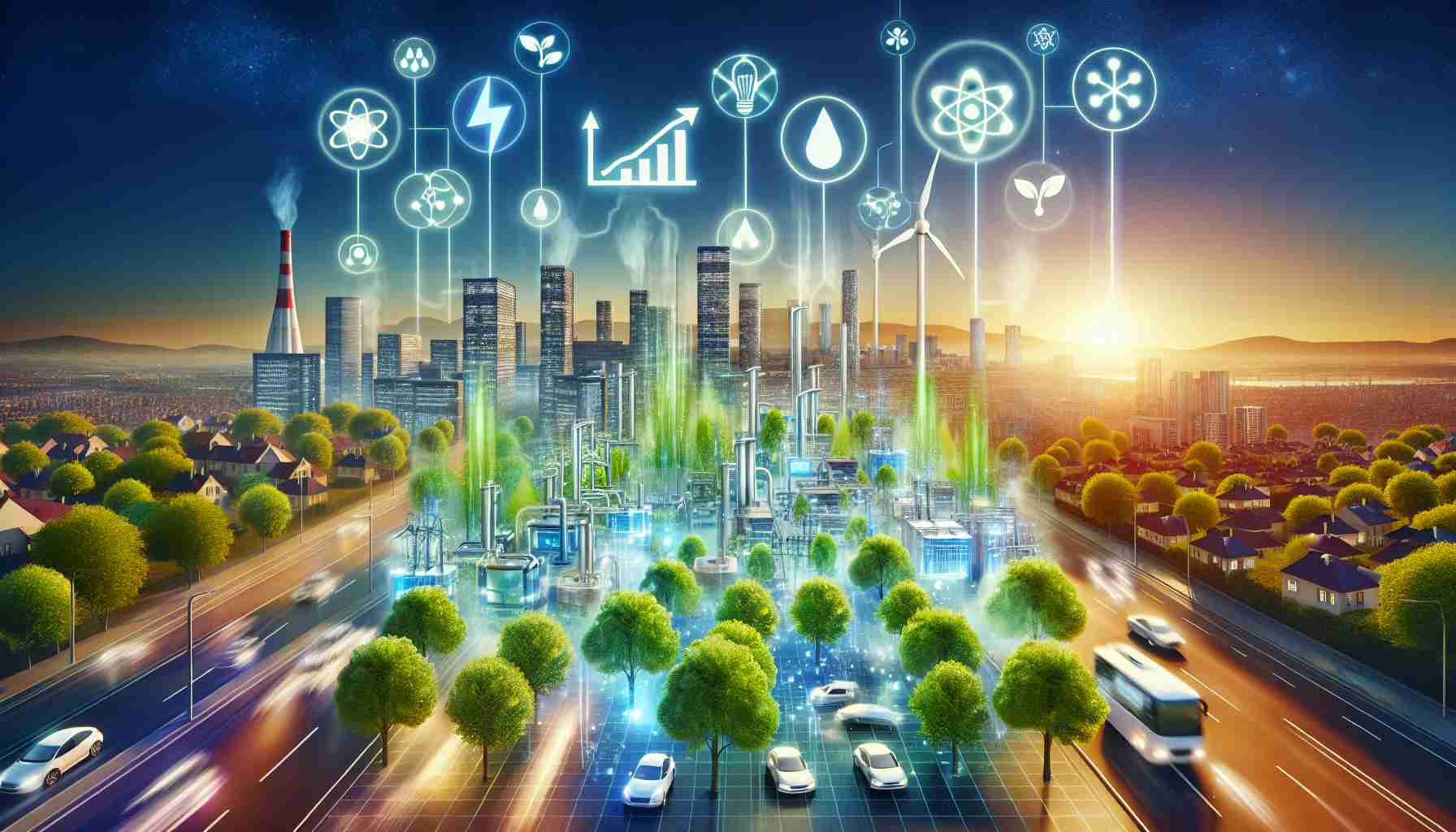The Critical Role of Section 45V in Clean Energy
The Section 45V Clean Hydrogen Production Tax Credit is poised to transform the hydrogen landscape in the United States. This initiative, part of the Inflation Reduction Act, aims to stimulate the production of clean hydrogen while significantly reducing greenhouse gas emissions in challenging sectors such as heavy industry and transportation.
Designed to address economic hurdles, this tax credit provides financial incentives for companies that produce hydrogen with low lifecycle emissions, ensuring it competes effectively against traditional fossil fuels. The U.S. Department of Treasury and IRS have set guidelines that limit carbon emissions to 4 kg CO2e per kg of hydrogen, encouraging the use of innovative technologies to meet these standards.
Key benefits of the 45V credit include financial rewards up to $3 per kilogram of low-emission hydrogen, dependent on the emissions intensity of the production process. Additional incentives are available for compliance with prevailing wage rates and the creation of apprenticeship programs, fostering a skilled workforce in this emerging sector.
Stakeholder feedback has influenced these guidelines, offering flexibility for various production methods and existing facilities. The ultimate goal is to drive investments in clean hydrogen infrastructure, positioning hydrogen as a complementary energy source alongside wind and solar power.
In a rapidly evolving political landscape, the momentum for clean hydrogen is supported by bipartisan interests, positioning it as a viable pathway towards a sustainable and decarbonized economy.
Revolutionizing Clean Energy: The Impact of Section 45V on Hydrogen Production
The Critical Role of Section 45V in Clean Energy
The Section 45V Clean Hydrogen Production Tax Credit, established under the Inflation Reduction Act, is set to reshape the hydrogen production landscape in the United States, driving a significant shift towards greener energy sources. This initiative not only aims to enhance hydrogen production but also targets substantial reductions in greenhouse gas emissions, particularly within sectors that typically rely on heavy fossil fuel consumption, such as transportation and heavy industry.
Key Features of Section 45V
– Emission Standards: The tax credit encourages hydrogen production processes that maintain low lifecycle greenhouse gas emissions, with stringent limits set at 4 kg CO2e per kg of hydrogen. This requirement is designed to promote the adoption of innovative technologies and methods in hydrogen production.
– Financial Incentives: Companies producing clean hydrogen are eligible for tax credits up to $3 per kilogram. The specifics of this incentive depend on the relative emissions intensity of their production methods, incentivizing continuous improvement in sustainability practices.
– Support for Workforce Development: Additional bonus credits are available for businesses that utilize prevailing wage rates and participate in apprenticeship programs. This aspect not only strengthens the industry but also builds a skilled workforce prepared for the demands of a growing clean hydrogen market.
Advantages of the Section 45V Credit
– Economic Growth: By providing significant financial incentives, Section 45V is likely to accelerate investments in clean hydrogen infrastructure, positioning hydrogen as a vital component in the energy transition alongside renewable sources like wind and solar.
– Environmental Impact: The guidelines laid out encourage the reduction of carbon emissions in alignment with national and global climate targets, making clean hydrogen a feasible option for decarbonizing the economy.
Use Cases and Innovations
Hydrogen produced under Section 45V can serve a variety of applications, from fueling fleets of hydrogen-powered vehicles to providing energy storage solutions that integrate seamlessly with renewable generation. Industries such as steel manufacturing, responsible for a significant share of global emissions, can also benefit greatly from using low-emission hydrogen as a cleaner alternative.
As the demand for clean energy solutions grows, innovations in hydrogen production, such as electrolysis using renewable energy and biomass gasification, are gaining traction. The Section 45V initiative serves as a catalyst for these advancements, encouraging collaboration among academia, industry, and government.
Market Trends and Predictions
The clean hydrogen market is expected to grow exponentially in the coming years due to supportive legislation like Section 45V. Analysts predict that by 2030, the demand for hydrogen could surge, driven by its versatility and lower environmental impact compared to conventional fuels.
Challenges and Limitations
Despite its potential, there are challenges in wide-scale adoption. The high initial costs of technology implementation and the need for substantial infrastructure upgrades can be significant barriers. Additionally, ensuring consistent quality and supply of clean hydrogen will require concerted efforts from various stakeholders.
Conclusion
Section 45V of the Inflation Reduction Act is a game-changer for the clean hydrogen sector in the U.S. By providing robust financial incentives and structured guidelines, it encourages innovation while aiming for a sustainable energy future. As the market evolves, the collaborative efforts of government, industry, and communities will be crucial to overcoming the challenges and reaping the benefits of this critical initiative.
For more insights on green initiatives and clean energy, visit energy.gov.
